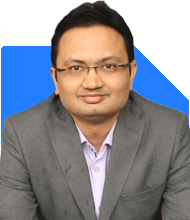Ramalingam Kalirajan |10924 Answers |Ask -Follow
Mutual Funds, Financial Planning Expert - Answered on Dec 23, 2024
He has an MBA in finance from the University of Madras and is a certified financial planner.
He is the director and chief financial planner at Holistic Investment, a Chennai-based firm that offers financial planning and wealth management advice.... more

Need to invest in mf thru SIP of rs 10000 monthly with time horizon of 3 years and one lumpsum investment of rs 25 lacs in mf. Which are best options? Regards GK Raju
SIP Investment for a 3-Year Horizon
A 3-year horizon is relatively short for equity mutual funds. Hence, capital preservation and moderate growth should be the primary goals.
Recommended Fund Categories
Hybrid Funds: These balance equity and debt, offering lower risk than pure equity funds. They are suitable for a 3-year horizon.
Arbitrage Funds: These invest in arbitrage opportunities and have minimal risk. They are a safer choice for short-term SIPs.
Short-Term Debt Funds: These focus on fixed-income instruments with shorter maturities, ensuring stability and predictable returns.
Key Considerations
Risk Mitigation: For a short horizon, avoid high-risk funds like small-cap or thematic funds.
Liquidity: Choose funds with no exit load beyond one year for better flexibility.
Lumpsum Investment of Rs. 25 Lakhs
Lumpsum investments require careful allocation to balance risk and return, especially over 3-5 years.
Recommended Fund Categories
Dynamic Asset Allocation Funds: These adjust equity and debt allocation based on market conditions, offering balanced returns.
Equity Savings Funds: These combine equity, arbitrage, and debt for steady growth with controlled risk.
Corporate Bond Funds: These focus on high-quality debt instruments and are ideal for preserving capital while earning stable returns.
Short-Term Debt Funds: These ensure low risk and predictable returns, making them suitable for conservative investors.
Avoid High-Risk Investments
Avoid pure equity funds for lumpsum investment over 3 years. The short horizon increases market timing risk.
Thematic and sectoral funds should also be avoided due to volatility and concentration risk.
Tax Implications for Both Investments
Understanding taxation is crucial for maximising post-tax returns.
Equity Funds: Short-term capital gains (STCG) are taxed at 20% for holdings under one year. Long-term capital gains (LTCG) above Rs. 1.25 lakh are taxed at 12.5%.
Debt Funds: Both STCG and LTCG are taxed as per your income tax slab.
Hybrid Funds: Taxation depends on the equity-debt ratio. If equity exposure is over 65%, equity taxation rules apply.
Arbitrage Funds: Treated as equity funds for taxation purposes.
Active Funds vs Index Funds
Active funds aim to outperform the market and are managed by expert fund managers.
Index funds only mirror the market and may underperform during volatile periods.
For a 3-year horizon, actively managed funds provide better growth potential and risk management.
Importance of Regular Plans Over Direct Plans
Regular plans offer professional monitoring by a Certified Financial Planner (CFP).
CFPs optimise asset allocation and ensure timely portfolio rebalancing.
Direct plans lack advisory support, leading to missed opportunities or inefficient decisions.
Final Insights
For your Rs. 10,000 SIP, hybrid or short-term debt funds are ideal for balancing growth and stability. Arbitrage funds can also be considered for their low-risk profile.
For the Rs. 25 lakh lumpsum, dynamic asset allocation funds and corporate bond funds offer a balanced and low-risk investment approach.
By combining these fund types, you can achieve steady returns and protect your capital over the next 3 years. Consult a Certified Financial Planner to tailor the investments further to your needs.
Best Regards,
K. Ramalingam, MBA, CFP,
Chief Financial Planner,
www.holisticinvestment.in
https://www.youtube.com/@HolisticInvestment
You may like to see similar questions and answers below
Omkeshwar Singh | Answer |Ask -Follow
Head, Rank MF - Answered on Nov 26, 2021
Tejas Chokshi | Answer |Ask -Follow
Tax Expert - Answered on Jun 23, 2023
Ramalingam Kalirajan |10924 Answers |Ask -Follow
Mutual Funds, Financial Planning Expert - Answered on Apr 08, 2024
Ramalingam Kalirajan |10924 Answers |Ask -Follow
Mutual Funds, Financial Planning Expert - Answered on May 18, 2024
Ramalingam Kalirajan |10924 Answers |Ask -Follow
Mutual Funds, Financial Planning Expert - Answered on Aug 13, 2024
Purshotam Lal |70 Answers |Ask -Follow
Financial Planner, MF and Insurance Expert - Answered on Dec 23, 2025
Purshotam Lal |70 Answers |Ask -Follow
Financial Planner, MF and Insurance Expert - Answered on Dec 23, 2025
Samraat Jadhav |2522 Answers |Ask -Follow
Stock Market Expert - Answered on Dec 23, 2025
Samraat Jadhav |2522 Answers |Ask -Follow
Stock Market Expert - Answered on Dec 23, 2025
Samraat Jadhav |2522 Answers |Ask -Follow
Stock Market Expert - Answered on Dec 23, 2025
Samraat Jadhav |2522 Answers |Ask -Follow
Stock Market Expert - Answered on Dec 23, 2025
Samraat Jadhav |2522 Answers |Ask -Follow
Stock Market Expert - Answered on Dec 23, 2025
Dr Nagarajan J S K |2578 Answers |Ask -Follow
NEET, Medical, Pharmacy Careers - Answered on Dec 23, 2025
Samraat Jadhav |2522 Answers |Ask -Follow
Stock Market Expert - Answered on Dec 23, 2025
Ramalingam Kalirajan |10924 Answers |Ask -Follow
Mutual Funds, Financial Planning Expert - Answered on Dec 23, 2025


























